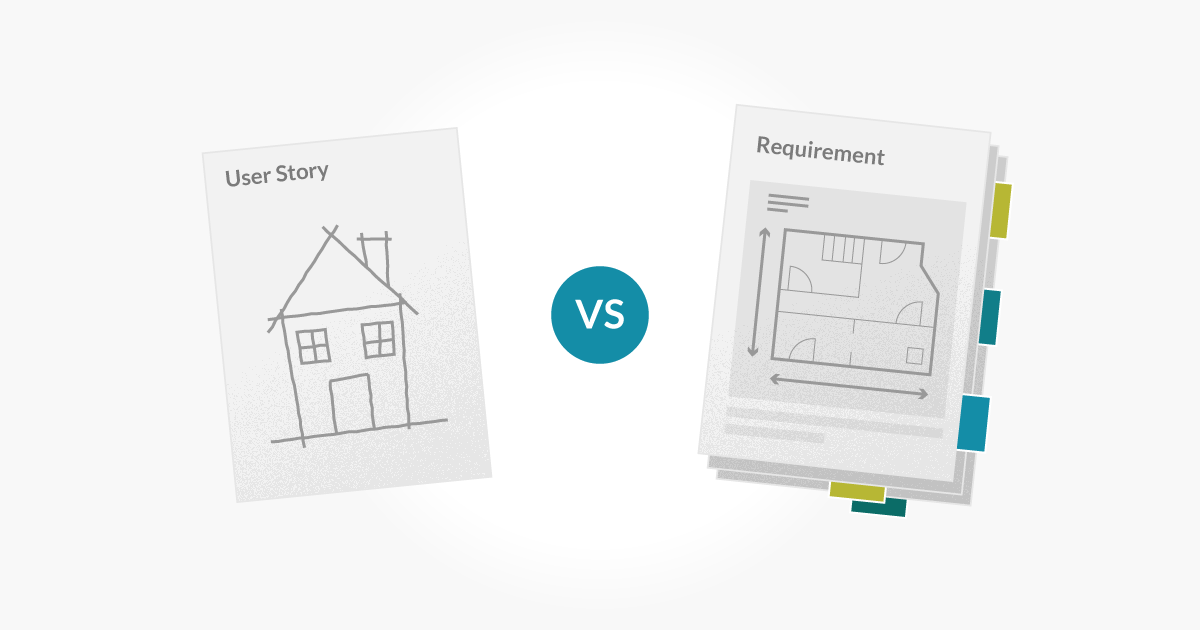User stories and requirements are common terms used in the software industry. But what exactly are they? Are they different? Are they the same? We’ll answer these questions in this post.

What Is A User Story?
User stories are short descriptions of functionality told from the user’s perspective. The focus is on why and how the user interacts with the software. A user story is essentially a high-level definition of what the software should be capable of doing. Typically, any feedback or request that comes from the business or end-user can be written as a user story.
A good user story is written in simple language and speaks to the reason and anticipated benefits of a specific area of the software. They usually follow a template like this:
As a <type of user>, I want <some desired outcome> so that <some reason>.
Here’s an example of a user story for a basic e-commerce site:
As a customer, I want to be able to view the items in my cart so that I know for sure what I’m purchasing.
Acceptance criteria often accompanies the user story. These criteria are the boundaries of the user story (feature) and they essentially determine when the user story is completed. Acceptance criteria is also what the tester will write/conduct their tests against. You can think of acceptance criteria as the functional requirements that support a user story. They confirm priorities and integrate the user’s perspective into the development team’s approach.
Learn more about writing test cases from user stories and acceptance criteria.
What Is A Requirement?
Traditional requirements describe how the software should act. The intent of the system is the main focus. Requirements documents go into great detail on how an area of software should work. They typically serve the purpose of guiding how the software team will build something.
While user stories are plain and simple, requirements documents go into a lot of detail and take a fair amount of time to write. Requirements documents often contain things like executive summaries, scope, risks, and more. They set the level of quality for functionality, performance, and user experience.
Here’s an example of a few requirements for a basic e-commerce site:
- Display the name of each item in the shopping cart.
- Display the quantity of each item in the shopping cart.
- Allow the user to remove any items from the shopping cart.
What Are The Main Differences?
In general, user stories are more commonly used within agile methodology, while requirements documents are more commonly associated with the traditional waterfall methodology.
Due to the light nature of user stories, they promote more discussion and collaboration than requirements documents. As you can see in the above examples, requirements lay out specific detail while the user story example leaves room for discussion. These discussions may take place prior to or within the planning session. As we discussed in a previous post, the entire team (including QA) should be involved in this discussion.
With requirements docs, the greater details are already fleshed out. It’s pretty rare for a developer to append or modify requirements documents.
By the time software is implemented per a formal requirements document, the actual requirements may have changed. With user stories, anyone should be able to contribute to the user story backlog at any time. This could be a developer raising issues on technical debt, the client requesting a new feature, or a tester who has noticed a UX issue. The backlog is a collaborative effort and therefore ensures the work being done aligns with the customers needs.
Finally
While similar in nature, user stories and requirements are quite different, and they involve a different approach to working and building software. Agile teams tend to use user stories more often than requirements as they allow flexibility and collaboration, whereas waterfall teams use requirements and requirements docs to specify the finer details ahead of time.

